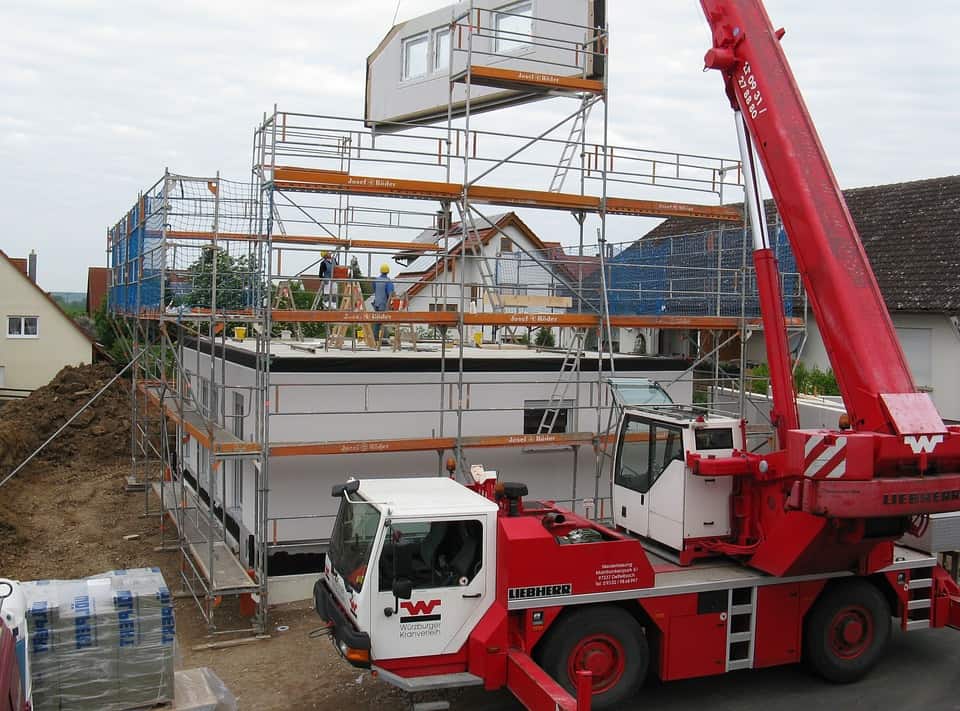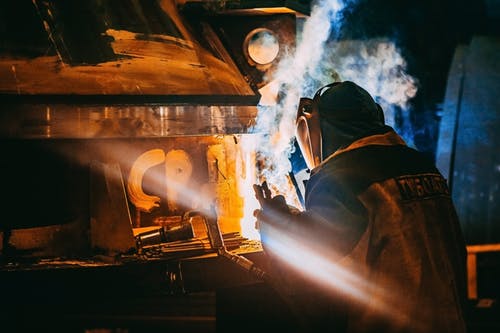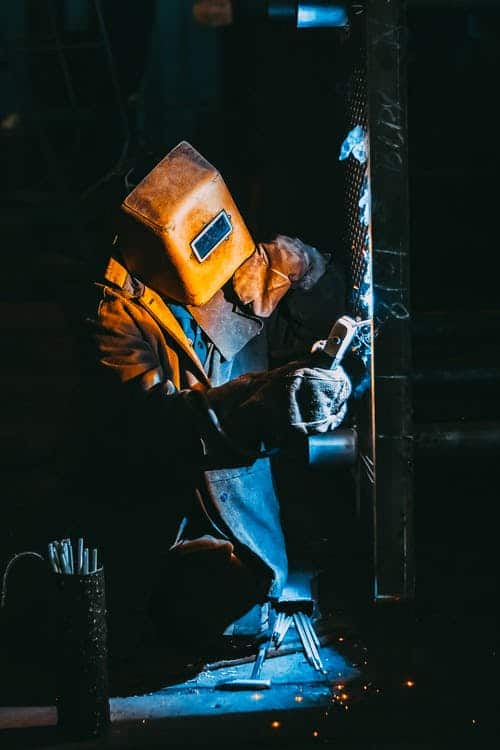Metals are typically strong, bright, hard, cold, and smooth. As a bonus, they are ductile, malleable, and resistant to breaking. Metals have excellent thermal, acoustic, and electrical conductivity. They always expand as the temperature increases and shrink when the temperature falls. They fuse quickly and easily with other metals.
One of man's most enduring and rewarding pursuits is the investigation of metals. How dare you suggest that napping isn't one of many superior activities! Nonetheless, since the Bronze Age, metals have played a crucial role in human progress. The correct title of the course you're taking is "Materials Technology," although metals continue to be the focus of most of your studies. That's why you must brush up on the fundamentals.
As metal is such a broad subject, we've organised this article into sections with brief yet descriptive headings. Further specifics can be obtained after that point.
Check Out Sheet metal fabrication company.

Table of Contents
Ferrous Metals
Iron-based alloys are the most crucial and ubiquitous among all the metals put to use in Engineering. Hence, there are two distinct groups of metals. Both iron-based and non-iron-based varieties exist. All iron-based metals are referred to as ferrous, from the Greek word iron. Steel is classified as a Ferrous metal since iron is its primary element. Using a magnet is the quickest and easiest technique to determine whether or not a metal is Ferrous. A magnet will adhere to any Ferrous metal because iron, and by extension, all ferrous metals, are magnetic.
Iron, in its purest form, is far too malleable and soft to be of any practical use in engineering. Most iron atoms pack closely together in ordered layers when the metal cools and transforms from a liquid to a solid. But occasionally, things get out of whack and form dislocations—weak spots—in the body. Iron deforms under stress because atomic layers in these spots slide past one another. This helps to explain why soft iron may be shaped easily. Yet, by incorporating carbon into the iron, various alloys can be created, each with its own unique set of characteristics. Carbon steels are the name for these metals. In an alloy, one of the constituent materials is metal, and the others are secondary.
Non-Ferrous Metals
By now, you must be able to guess what Non-Ferrous metals are based on your familiarity with Ferrous metals. These are alternative metals that do not share the same chemical composition as iron. For example, tin, Brass, Lead, Copper, Aluminum, etc., are non-ferrous metals. Once again, a magnet will reveal that the metal in question is non-ferrous. This is because the magnet cannot attract a non-ferrous metal, as one might expect.
In other words, these are metals with no iron in them. They serve several purposes but come at a high cost because of their extraction difficulties.
Iron Production
Authentic iron is extremely rare. To be mined, it must first exist as Rocks, clay, sand and Iron Ore., all undesirable, are abundant in iron ore and must be sorted out. When iron is mixed with oxygen chemically, the resulting compound is termed iron oxide. The impurities in the iron ore are eliminated during the smelting process in a blast furnace.
Steel Production
Steel is much more common than iron, so you probably don't even notice it. Instead, consider the things you use daily, from cars to knives to the kitchen sink. Iron and carbon are the two main ingredients in steel production. Steel can be made in two ways, one using basic oxygen and the other using an electric arc.
Alloys
When two or more metals are combined, the result is an alloy. Engineers create alloys to enhance the performance of pure metals, those found in the Periodic Table. Use copper as an illustration. In the distant past, someone discovered that by combining Copper and Tin, he could create a new metal that was stronger and harder than either component alone. The name "Bronze" was given to this novel metal. Thanks to his "new" metal, the guy could make a wide variety of useful objects. The Bronze Age was the name given to this period in history. Eventually, it was discovered that combining Copper and Zinc produced metal with the appearance of gold; this alloy is known as Brass. Today, the process of alloying metals is a multibillion-dollar business. Engineers have enough to do thanks to the variety of non-pure metals available, including Steel, aluminium, and others. Simple Steel is not an alloy because it consists solely of Iron and Carbon. Carbon does not belong to the metal family. Nonetheless, most engineers consider carbon steel to be an alloy. But other forms of Steel are classified as Alloys because they contain trace amounts of metals besides iron.
Copper
Copper first appears reddish brown but eventually turns green due to exposure to the elements. The material is malleable and ductile. It's simple to Solder and Braze and conducts heat and electricity well. The alloys Brass and Bronze are made from copper as their base metal. Copper may be worked and aged to increase its hardness. Work hardening refers to this practice. Annealing can fix this when the copper is heated to red heat and then quenched in water. Although copper has numerous purposes, it is increasingly being replaced by other metals due to rising production costs and decreasing availability in the Earth's crust. Copper is used in a wide variety of applications, including water piping, electrical wire and roofing, soldering iron parts, piping, and the production of Brass and Bronze.
Copper's electrical and thermal conductivity is very high for a metal of its softness, malleability, and ductility. It's an orangy pink shade. Because of its malleability and the ease with which it can be soldered, copper is frequently employed in the construction sector for forming pipes and tubes. It's sometimes left to oxidise to something like a blue-green colour and used as cladding.
Check out Austgens DESIGN CAD/CAM
Lead
Unleaded Petrol exists because the exceedingly dangerous lead was removed from regular gasoline. This material is prohibited in the Metalwork area and will not be used there. While familiarity is not necessary, it is helpful to have some background knowledge. Lead is the heaviest of the typical metals because it has the largest density. Although it seems drab grey after being exposed to the elements when cut, it reveals a slightly glossy, greyish-blue inside. It may be easily shaped because of its suppleness. Don't test our claim that 5mm sheet Lead can be easily bent in your hands, but please take our word for it that the material is incredibly pliable. Lead has various applications despite its toxicity; it is used in automobile batteries, X-ray shielding, chimney flashing, etc.
Lead is a highly toxic metal that, if ingested, can have serious health consequences.
Lead's malleability makes it useful for creating a wide variety of building components, including but not limited to: various cladding panels, windows, roofs, copings, tanks, linings of cornices, gutters, flashing, downspouts, and so on. Also, it's used in the production of soft solder.
Brass
You can think of brass as a mixture of copper and zinc. Brass's characteristics can be altered by changing the zinc content of the alloy. Brass, with its golden "gold" look, is regarded as a highly attractive metal. Despite its toughness, the material may be machined with moderate ease. Brass chips easily during lathe turning, hacksawing, and filing. Brass is not easily corroded. Plumbing, ornamental work, screws, fixtures, electrical fittings, brazing spelter, and so on are all made from brass because of the material's versatility and aesthetic appeal.
What Kinds of Metals Are Commonly Utilised in Buildings?
Metals used in buildings are chosen for their robustness, sturdiness, and resistance to the elements. Aluminium, Carbon steel, stainless Steel and copper tube are some of the most popular, and they each have their desirable properties and applications. Nonetheless, these metals are used in a wide variety of building and architectural purposes.

Aluminium
Aluminium's corrosion resistance, high conductivity, and flexibility also make it a useful industrial material. The metal is utilised in external windows, doors, cables, signage, and street lighting due to its resistance to the elements. Sheets, tubes, and castings made from metal are used to construct everything from cars and trucks to bikes and boats. In addition, aluminium is widely used in the construction industry, including HVAC ducts, roofs, walls, and handles.
Carbon Steel
As a result of its high hardness and strength, carbon steel is a highly sought-after alloy in the building sector. Plates, Beams, and rectangular tubes for trailer beds, welded frames, and bridges are the most common products made from structural Steel. In addition, hollow structural pieces and rebar are also commonly made from this material (HSS). A scale from "extremely low" through "very high" is used to classify the quantity of carbon in carbon steel, an iron-carbon alloy.
- Carbon levels between 0.01% and 0.30% are typical for mild Steel. Although grey and quickly corroding, its properties—less ductile but stronger and tougher than iron—are impressive. Using girders, scaffolding, automobile bodies, storage units, and oil barrels.
- Carbon content in medium carbon steel ranges from 0.3 per cent to 0.7 per cent. Features include high tensile strength, toughness, and brittleness (making it less ductile than mild Steel). Gears, tools, keys, etc., all require strong and durable materials, and this material is ideal for such applications.
- The carbon content of high-carbon Steel is between 0.7 and 1.3 per cent. Consists of a very hard and brittle substance. As such, it finds application in the production of guillotines, springs, and other cutting equipment and items subject to heavy wear.
Alloys of iron and chromium make up stainless Steel. The chromium content in steels typically ranges from 13 to 27 per cent. Characteristics: An oxide film formed by chromium's presence prevents the metal from rusting. Durability, toughness, and tensile strength. It's a very shiny and pretty metal also. Made use of kitchenware, plumbing fixtures, automobile components, etc.
Grey Cast Iron is an iron-carbon-silicon-magnesium-sulphur-phosphorus alloy that typically contains 94% iron. The material is brittle yet very robust and durable; it rusts but is quite corrosion-resistant. Pistons, machinery components, street lighting, drain covers, and equipment are all put to use.
Copper Tubing
Copper tubing, of which there are two primary varieties, is commonly used to create pipes in buildings. Hot and cold water pipes inside buildings should ideally be rigid copper tubing. Conversely, soft copper is commonly utilised for refrigerant lines in HVAC and heat pump systems. The ductile and malleable copper metal is impervious to corrosion from both water and soil and can be recycled. As a bonus, soldering copper tubing is simple and results in lasting strong connections. Those qualities make this metal perfect for use in conduits and tubes.
Stainless Steel
When it comes to construction, stainless Steel is almost as old as stone. Because of its durability and resistance to corrosion and stains, it was utilised centuries ago in the construction of buildings still standing today. Stainless Steel is relied on by some of the world's most recognisable landmarks, including New York City's Chrysler Building. Since stainless Steel is an alloy, its qualities can be modified by changing the proportions of individual alloy components. As it is pliable and simple to weld, grade 301 is the most popular option. Roofs, supports, railings, cladding, and drainage systems all use this material.
Check out Sheet Metal Fabrication Job Safety Equipment
Metal Ceilings Have Three Types.
Three different types of systems can be used to install recessed lighting in a ceiling: clip-in, hook-on, and lay-in.
Other kinds of ceiling tiles, such as mineral fibre, can also be installed on these grids. However, by virtue of their substance, metal pan ceilings allow for a greater variety of designs and finishes than their non-metal counterparts.
Several grids are described below, along with examples of where they excel. In addition, the list will explain how you can install a metal pan and its corresponding grid to create a ceiling unlike any other.
Lay-in Tile
Tiles for the ceiling rest on a T-shaped runner, as shown at the top left. As seen on the right, NAB Docklands has a perforated lay-in tile method. Most conventional workplaces use a lay-in tile system, whose grid can be seen as its whole.
Installing and removing individual tiles is a breeze because they rest on the T-shaped runner (top left).
Lay-in tiles allow for greater adaptability in accommodating maintenance needs and services that require access to the ceiling space above the tiles.
When a service is needed in a room, like electrical, plumbing, or air conditioning, lay-in tiles can be easily removed and replaced.
When it comes to office makeovers and relocations, they are also among the most convenient features.
Choose between a metal and non-metal pan:
- Many people like metal ceilings because of the variety of design possibilities available, including open-cell lay-in tiles. Armstong's contribution here.
- Metal pans with such a lay-in system can have various textures according to the materials used and the manufacturing process.
- Lay-in aluminium pan ceiling systems can add texture with tegular-edged tiles of varying thicknesses.
- Tiles with a tegular edge can come in various sizes, so you can mix and match heights to create a unique design.
- In any case, this cannot be accomplished with such a mineral fibre board.

Tile That Clips In
Clip-in system ceiling tiles cover up the unsightly suspended grid. Each manufacturer has their take on a clip-in mechanism that works with their boards, but they all use some variation of a spring tee runner.
Clip-in tiles aren't as service-friendly as lay-in tiles because they require a demountable tool to access the ceiling plenum. However, unlike lay-in tiles, they are unaffected by upward cleaning pressure, allowing tenacious markings to be removed without the tile being damaged or displaced.
But a hinged-down design could solve the problem of inaccessibility.
The ceilings that require service access have hinge-downs installed, although not everywhere.
Choose between a metal and non-metal pan:
- The ceiling runners can be hidden by the clip-in tiles, which also become an eye-catching design element. They can also be cleaned with pressure directed upwards without being displaced.
- Armstrong, as an illustration.
- Metal ceilings are versatile thanks to a clip-in system and may be installed in a wide variety of shapes and sizes. They are available in the typical rectangular shape, a variety of tegular edge finishes, and tubular, hinged, and baffled configurations.
- Because of their rigid nature, they can generate complex curvatures and textures that would be impossible with more flexible systems.
Check out Metal Fabrication Methods & Techniques used in Melbourne
Hook-on Tile
Hook-on systems can be hung inside a variety of square, rectangular, trapezoidal, and triangular designs since they attach to a hanging J or Z suspension rail.
Tiles can be hauled out, and ceiling voids can be easily reached since they are part of a concealed system that cannot be fixed or removed with a specific tool.
Choose between a metal and non-metal pan:
- A wide range of colours and textures may be achieved with metal pantiles. In most cases, you'll get a guarantee of up to 25 years. Pictures courtesy of SAS International.
- As with a clip-on system, the versatility of metal pan ceiling tiles is highlighted by the hook-many-on's potential configurations.
- In addition, a hook-on ceiling allows for nearly limitless customization.
- Metal ceilings have advantages over mineral fibre tiles in terms of durability and aesthetics because of their durable composition.
Which Metalworking Methods Are Available?
It doesn't matter if the final product is on an industrial scale, a sculpture, or as little as a ring or earring; the procedures of metalworking are consistent regardless of the final size. In addition, many fundamental methods are transferrable to various forms of creative expression. The printing process, for instance, uses engraved plates, and techniques like appliqué and repose can be used for materials as diverse as fabrics and ceramics. This link will take you to some examples of metalwork created by modern artists.
- Annealing. Restoring a material's flexibility after it has been work-hardened by heating it.
- Applique. Soldering or granulating forms cut from sheet metal to some other metal surface to create a pattern.
- Casting. Casting is the method of forming metal by pouring it into a mould at a high temperature.
- Chasing. Decoration of metal surfaces by pushing sharp implements into them.
- Enamelling. Glazing refers to the process of bonding glass to metal. Flux plus metal oxides come together to form enamels. One popular type of enamelwork is called cloisonne.
- Forging. Work is done by pounding a piece of metal on such an anvil or other form to alter its shape, reduce its thickness, or lengthen it.
- Granulation. The fusion of tiny metal beads and wires onto a metal base or to one another constitutes this surface treatment technique. Possible in either gold or silver.
- Malleability. a measure of a metal's resistance to cracking or breaking when stretched or forged into a new shape.
- Piercing. Making cuts in metal to make lines or designs.
- Raising. Modifying flat metal using heat and pressure to create new shapes.
- Repousse. A method of making a low-relief design onto metal by pushing it out with hammers and punches from the back.
- Reticulation is the process of melting or fusing a metal surface to form a pattern.
Conclusion
Metals have many desirable qualities, including strength, brilliance, hardness, coldness, smoothness, malleability, and brittleness resistance. They fuse rapidly and easily with other metals and have great thermal, acoustic, and electrical conductivity. There are two types of metals used in Engineering, ferrous and non-ferrous, with iron-based alloys being the most important and pervasive of the two. When iron cools from a liquid to a solid state, the atoms pack tightly together in ordered layers, but sometimes things get out of whack and form dislocations. These metals are known as carbon steels.
Non-Ferrous metals are metals that don't contain iron in their chemical makeup. They're valuable because of their versatility, but costly because of the trouble associated with extracting them. True iron is difficult to come by and must be extracted from ores like sand, clay, and rocks. Steel is produced with basic oxygen and an electric arc, and it is the more common of the two. An alloy is a compound metal formed by the joining of two or more metals.
Someone, a long time ago, figured out that if you mixed Copper and Tin, you got a new metal that was stronger and harder than either component alone. This time period is commonly referred to as the Bronze Age. As a result, alloying metals is now a multibillion dollar industry. Pipes, electrical wire, roofing, soldering iron components, piping, and the creation of Brass and Bronze are just some of the many uses for copper. Although carbon steel is not an alloy, other types of steel that contain even small amounts of metals other than iron are.
Due to its high toxicity, unleaded gasoline is not permitted in the metalworking area. Cladding panels, windows, roofs, copings, tanks, linings of cornices, gutters, flashing, downspouts, and so on can all benefit from using lead because it is the heaviest of the common metals and is therefore easy to work with. The combination of copper and zinc in brass makes for a very appealing metal. You can machine it with some ease, and it resists corrosion well. Common construction metals include aluminium, carbon steel, stainless steel, and copper tube.
Aluminum's resistance to corrosion, high conductivity, and malleability make it a valuable industrial material. Carbon steel's superior hardness and strength make it a sought-after alloy in the construction industry. Grey cast iron, an iron-carbon-silicon-magnesium alloy, is used in a wide variety of applications due to its high tensile strength, toughness, and brittleness (among other qualities). Stainless steel's high chromium content makes it hard and brittle enough to be used in cutting tools and other high-wear applications. Pipes in buildings are typically made of copper tubing, while stainless steel is utilised for many structural and decorative purposes.
Recessed lighting can be installed in a ceiling using one of three different systems: clip-in, hook-on, or lay-in. In comparison to their non-metal counterparts, metal pan ceilings open up more design possibilities. It is easier to perform maintenance and provide services that require access to the ceiling space above lay-in tiles. Open-cell lay-in tiles and clip-in system ceiling tiles are two types of metal ceilings that have become increasingly popular for commercial renovations and moves. Tiles installed with a clip-in system conceal the unsightly suspended grid, which is concealed by the ceiling runners, and can be easily cleaned by applying pressure in an upward direction without being displaced.
Because they fasten to a hanging J or Z suspension rail, hook-on systems can be installed in a wide variety of room shapes, including square, rectangular, trapezoidal, and triangular. Metal pan ceiling tiles come in a variety of colours and textures, and some manufacturers even offer a 25-year warranty on their products. Metal ceilings are more long-lasting and aesthetically pleasing than mineral fibre tiles. Many of the techniques used in metalworking can be applied to other artistic endeavours. Annealing, casting, chasing, glazing, forging, granulation, piercing, raising, and repoussé are just some of the metalworking techniques that contemporary artists use to create works of art.
Content Summary
- Nonetheless, since the Bronze Age, metals have played a crucial role in human progress.
- That's why you must brush up on the fundamentals.
- All iron-based metals are referred to as ferrous, from the Greek word iron.
- By now, you must be able to guess what Non-Ferrous metals are based on your familiarity with Ferrous metals.
- are non-ferrous metals.
- Once again, a magnet will reveal that the metal in question is non-ferrous.
- This is because the magnet cannot attract a non-ferrous metal, as one might expect.
- In other words, these are metals with no iron in them.
- Iron and carbon are the two main ingredients in steel production.
- Alloys
- Engineers create alloys to enhance the performance of pure metals, those found in the Periodic Table.
- Today, the process of alloying metals is a multibillion-dollar business.
- The alloys Brass and Bronze are made from copper as their base metal.
- Unleaded Petrol exists because the exceedingly dangerous lead was removed from regular gasoline.
- This material is prohibited in the Metalwork area and will not be used there.
- Don't test our claim that 5mm sheet Lead can be easily bent in your hands, but please take our word for it that the material is incredibly pliable.
- Plumbing, ornamental work, screws, fixtures, electrical fittings, brazing spelter, and so on are all made from brass because of the material's versatility and aesthetic appeal.
- As a result of its high hardness and strength, carbon steel is a highly sought-after alloy in the building sector.
- Carbon content in medium carbon steel ranges from 0.3 per cent to 0.7 per cent.
- The carbon content of high-carbon Steel is between 0.7 and 1.3 per cent.
- Hot and cold water pipes inside buildings should ideally be rigid copper tubing.
- As a bonus, soldering copper tubing is simple and results in lasting strong connections.
- Three different types of systems can be used to install recessed lighting in a ceiling: clip-in, hook-on, and lay-in.
- Other kinds of ceiling tiles, such as mineral fibre, can also be installed on these grids.
- However, by virtue of their substance, metal pan ceilings allow for a greater variety of designs and finishes than their non-metal counterparts.
- In addition, the list will explain how you can install a metal pan and its corresponding grid to create a ceiling unlike any other.
- Choose between a metal and non-metal pan:Many people like metal ceilings because of the variety of design possibilities available, including open-cell lay-in tiles.
- Lay-in aluminium pan ceiling systems can add texture with tegular-edged tiles of varying thicknesses.
- Clip-in system ceiling tiles cover up the unsightly suspended grid.
- Clip-in tiles aren't as service-friendly as lay-in tiles because they require a demountable tool to access the ceiling plenum.
- But a hinged-down design could solve the problem of inaccessibility.
- The ceilings that require service access have hinge-downs installed, although not everywhere.
- The ceiling runners can be hidden by the clip-in tiles, which also become an eye-catching design element.
- Metal ceilings are versatile thanks to a clip-in system and may be installed in a wide variety of shapes and sizes.
- A wide range of colours and textures may be achieved with metal pantiles.
- As with a clip-on system, the versatility of metal pan ceiling tiles is highlighted by the hook-many-on's potential configurations.
- In addition, a hook-on ceiling allows for nearly limitless customization.
- Metal ceilings have advantages over mineral fibre tiles in terms of durability and aesthetics because of their durable composition.
- In addition, many fundamental methods are transferrable to various forms of creative expression.
- This link will take you to some examples of metalwork created by modern artists.
FAQs About Weldings
Basic metalwork involves marking, cutting, drilling, cutting internal and external threads, filing and joining. It's not difficult to work with metal, but, like working with wood, it requires specific skills and specialised tools.
The major component of steel is iron, a metal that in its pure state, is not much harder than copper.
Magnesium is the lightest structural metal and is abundantly available in the earth's crust and seawater.
Many aluminium grades can be considered of very high strength, even comparable to some steels. Nevertheless, comparing samples of the same size of the strongest aluminium alloys and steel alloys, more often than not, steel will be the strongest.
The weight of Gold is brought about by its high density. Each atom of gold is very heavy on its own, making the element heavy too. Unlike other elements that are as heavy as tungsten, gold's atoms are not so bonded to each other making it less brittle and easily shifted and shaped when working on it.

